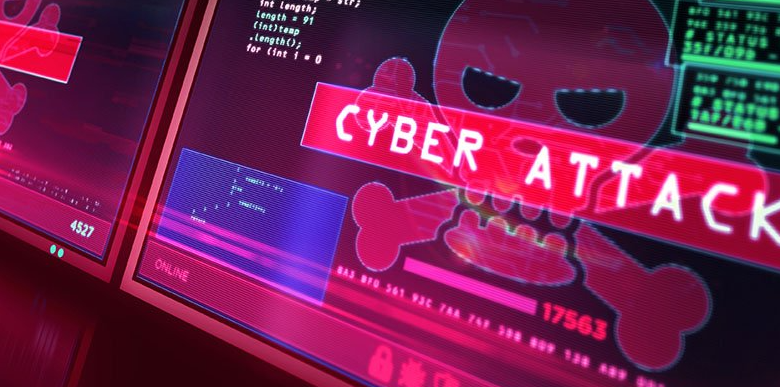Cyber Attacks On Higher Education Institutes: Threats, Impact, And Solutions

Ever since 2021, the number of cyber attacks on higher education institutes has increased. Higher education institutes have been under constant threat of cyber attacks. A wave of ransomware and malware hacking higher education systems revealed the dire need to spread awareness regarding cybersecurity. Despite paying the ransom, higher education institutes still recover the slowest after these attacks thanks to their outdated systems. Moreover, colleges and universities had to bear financial and operational costs as a result of cyber attacks. As October is recognized as Cybersecurity Awareness Month, we will explain the details of cyber attacks on higher education institutes in this post.
The risk of cyber attacks on higher education institutes is increasing every day because their systems are old and more vulnerable to cyber attacks. Most cybercriminals are motivated by money whereas some want to brag about successfully hacking renowned institutions like Harvard, etc. Another concern here is that even after paying the ransom money, colleges and universities still don’t get all of their data back. Besides, cyber attacks don’t only result in financial losses but destroy a higher education institute’s reputation as parents and students worry about their privacy and safety before applying. Studying cybersecurity and looking for a genuine essay writing service UK to complete your academic projects? We can help!
Cyber attack threats faced by higher education institutes
1. Ransomware

One of the most common cyber attacks on higher education institutes is ransomware. Most cybercriminals are using it to demand money from colleges and universities. Ransomware is a type of software and once it’s installed, it identifies important data and prevents victims from accessing it. After hackers and cybercriminals get hold of the valuable data stored on higher education institution networks, they keep this information in exchange for ransom money. Moreover, they also threaten to leak data on data-leaking sites.
2. Phishing

This is another type of common cyber attack against colleges and universities. Cybercriminals incorporate social engineering in phishing attacks, pretend to be trusted sources, and manage to trick the victim into providing confidential information. For instance, the hacker will pose to be the higher education institute, and students or staff members will provide details without a second thought.
3. Data Breach

Higher education institutes like colleges and universities are vulnerable to several types of data breaches. Data breaches are a huge concern because they can completely destroy educational systems. Additionally, a data breach occurs when cybercriminals breach the network and get their hands on sensitive information like bank information, medical records, and all other personal details.
4. SQL Injections

Higher education institutes are vulnerable to SQL injections and most cybercriminals and hackers make the most of this opportunity. In this cyber attack, cybercriminals enter malicious codes into query boxes like login pages and contact forms to access all the encrypted data and information. If they want, they can leak data, demand ransom, and even make changes to the existing data.
5. New and Advanced Attacks

With the advancement in technology, cyber attacks on higher education institutes are also evolving. Nowadays, cybercriminals are using fileless malware to hack data and sensitive information. The scary part about fileless malware is that you don’t even need to download a file or click on an infected link. On the other hand, it uses genuine and built-in system tools to execute dangerous attacks as they continue to run in the background. Even if you have an antivirus on, you can’t detect this attack as it doesn’t leave any traces.
Impact of Cyber Attacks on Higher Educational Institutes

Most cybercriminals target universities and colleges because their websites hold large amounts of personal data, banking information, research papers, and all other valuable information. However, when it comes to cyber attacks on higher education institutes, the damage is not only limited to financial costs and loss. The destruction hits on a deeper level. The compromise and theft of highly sensitive student and faculty data make everyone worried.
Apart from that, this also harms the institute’s overall reputation, reliability, and honor. All their years of hard work and efforts to maintain their reputation go wasted in a matter of few moments. These cybercriminals and hackers make even high-profile colleges and universities beg them for mercy. It also takes a toll on the mental health of students and staff and their stress levels reach the skies. Besides, the recovery process does not only cost millions but it takes months and even years for higher education institutes to recover from these attacks.
Cyber Attacks Solutions and Preventions
1. Cybersecurity awareness and training

It is the responsibility of colleges and universities to educate their students and faculty about cybersecurity threats, attacks, and preventive measures. Besides, higher education institutes need to make students and staff members understand their role in preventing phishing attacks and how they can recognize if it’s a trusted source asking for information or not.
2. Regularly update all systems

All higher education institutes must keep their systems and software updated. This includes their operating systems, website pages, browsers, and mobile applications. Moreover, IT teams should frequently check the university databases to fix bugs, vulnerabilities, and emerging threats or chances of threats. Most higher education institutes are more vulnerable to cyber attacks because of their outdated websites, databases, and systems. Colleges and universities don’t always invest in hiring cybersecurity teams, but this mistake can cost them millions in the future.
3. Cyber attack planning

Even if higher education institutes train their students and faculty members about cybersecurity and keep their systems upgraded, there will always be a chance of cyber attacks thanks to the advancements in technology. This is why it is important to be prepared for the worst beforehand. The best thing colleges and universities can do here is they can have response plans ready for uncertain situations and attacks. This will be of great help when they are under a cyber attack and they wouldn’t have to prepare and plan at that very moment. With a cyber attack response plan in hand, higher education institutes can take all the effective preventive measures. Nevertheless, if you want to submit well-structured assignments on time, know that we have a professional team of academic writers online UK to help you out.
You may also like this post.



